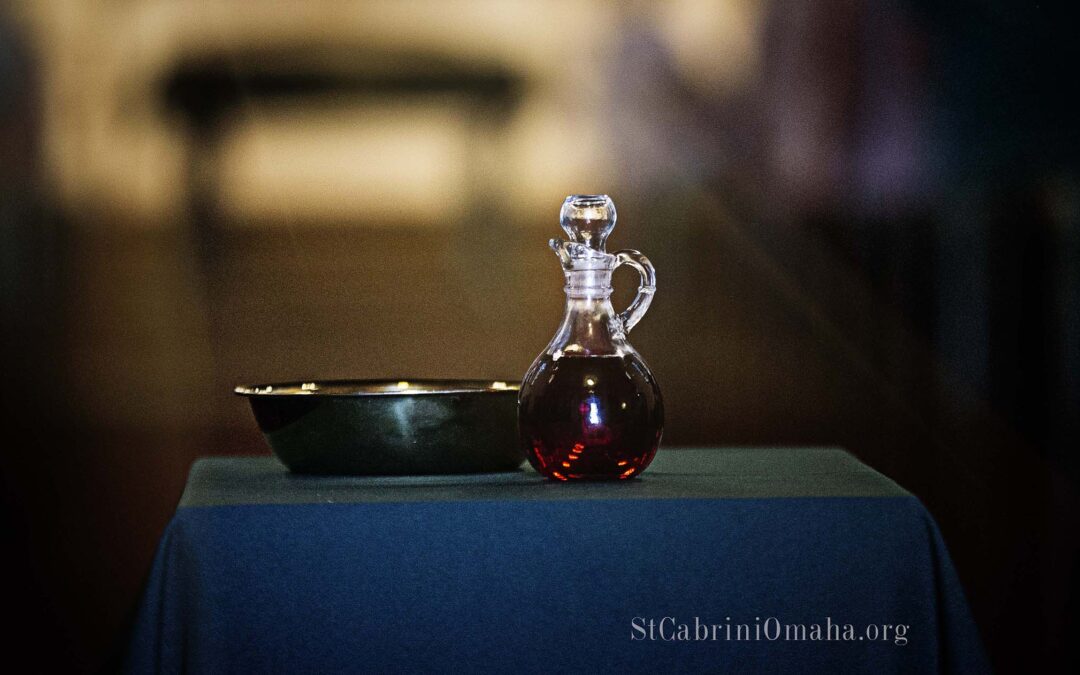Dear Friends,
Prior to Covid we offered the Eucharist under both kinds, the Body and Blood, at all of our weekend Masses. During the pandemic, for obvious reasons, the Archdiocese asked us to stop the distribution of the chalice and to limit Communion on the tongue. As the pandemic has receded, the Archdiocese has once again permitted Communion under both kinds and many parishes have restored the practice.
We will return to our former practice of offering the chalice at all weekend Masses beginning the first Sunday in October. Those of you who wish to receive may feel free to consume from the chalice as in the past.
As the chalice is once again offered to parishioners, a question that may be lingering in the back
of one’s mind might be: Is it safe to receive from a common chalice? Even before COVID-19,
this question had been asked and studied. Based on the findings of a 1997 study, the Centers for Disease Control and Prevention reported that “there had never been an outbreak of infection related to the communion cup and that a theoretical risk of transmitting infectious diseases by using a common communion cup exists, but that the risk is so small that it is undetectable.” (Managan L., Sehulster L., Chiarelo L., Simonds D., Jarvis W. Am J Infect Contr. 1998;26:538–539).
This opinion has been confirmed more recently, “The common communion cup may theoretically serve as a vehicle of transmitting infection, but the potential risk of transmission is very small. Currently, available data do not provide any support for the suggestion that the practice of sharing a common communion cup can contribute to the spread of COVID-19.” (Spantideas N., Drosou E., Barsoum M., Bougea A. Public Health. 2020;187:134-135. doi:10.1016/j.puhe.2020.08.012).
Nevertheless, as always, parishioners should be prudent in their decision to partake or not partake of the chalice based on individual health circumstances. Certainly, one should never approach the
chalice if he or she shows signs of illness, has been in contact with someone who is sick, or has
sores/lesions on the mouth. Furthermore, it seems prudent that immunocompromised persons
should avoid the shared chalice altogether. While the reception of Holy Communion under both kinds may be understood as a fuller sign of the Eucharistic banquet, nevertheless, the Church has always taught that the Real Presence of Christ is present, whole and entire, in each element of the consecrated bread and wine. Therefore, when one receives either the Sacred Host or the Precious Blood alone, he or she receives the body and blood together with the soul and divinity of our Lord Jesus Christ.
Our sharing in a common communion chalice also has powerful symbolic meaning. The unity of a common cup is visible. The unity of the church, the body of Christ, derives from its source in Christ — while simultaneously being built up by the members of the body through our participation in Christ. The body of Christ takes its life from Christ its head, but the body of Christ takes its concrete reality from the lives of its members — our gifts, stories, and realities brought together to make meaning and offered up in our participation in the life of Christ. It is a life that is shared. The body of Christ is not something that happens between the individual and Jesus, but between the community and Jesus – shared.
Once again, we will resume the common chalice the first weekend in October.
Peace,
Fr. Damian



